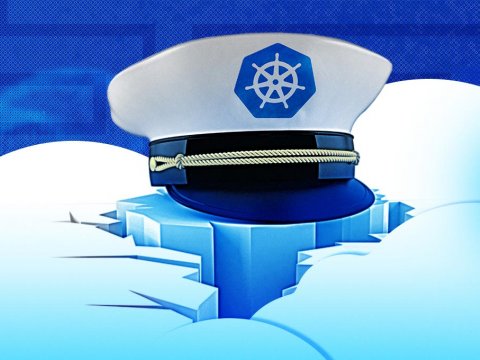How Does Cloud Native Benefit The Customer Experience?
In an era where your business needs to respond quickly, cloud native plays a role in allowing you to do more, faster.
Cloud native is a term that many use, but few truly understand. That might be partly due to the misperception that the term is binary; something is either cloud native or it's not. In fact, cloud native is more of an approach or concept, with a spectrum of levels. On one end of that spectrum, you have more traditional ways of thinking about IT infrastructure, where conversations revolve around servers and how to utilize and protect those machines. On the other end of that spectrum, you have a transformative way of thinking which is less burdened by concerns with physical infrastructure and more focused on application-focused elements further up the stack. As their cloud efforts mature, organizations can gain increasing value through more advanced cloud native approaches and cloud native operations, focusing more on enriching their product to provide a better customer experience.
At the moment, the term cloud native is often used in the context of serverless computing and application containers. But it's worth noting that as cloud native methodologies evolve, so too will the defining technologies. This is why it makes more sense to think of cloud native as an overarching concept that is continually evolving.
What is cloud native architecture?
According to The Cloud Native Computing Foundation, cloud native is defined as, "resilient, manageable, and observable. Combined with robust automation, [Cloud Native] allow(s) engineers to make high-impact changes frequently and predictably with minimal toil." Cloud native as a concept can influence a number of things, from the developer mindset, to team design and culture and, of course, the systems being built. To be considered a cloud native organization, you don't necessarily need to be fully migrated to the public cloud. There are many ways to be cloud native in your approach to application development, while still having data centers — as long as the infrastructure allows engineers to make high-impact changes frequently and predictably with minimal effort. To enable rapid change, scale and resilience, there needs to be a detachment from the underlying infrastructure. That's why a cloud native view of IT would see infrastructure as disposable — provisioned in minutes and resized, scaled, moved, or destroyed on demand — via automation.
Empowering employees — your internal customers
Coming from an architecture and engineering background, I'm always thinking about two customers when it comes to rolling out technology strategy. The first customer is the obvious external customer — the person who makes purchases from your company in the form of products or services. The second customer is the internal customer — those development teams who are directly affected by the approach and technology. These two customers are inextricably linked.
Your internal customers develop, maintain and manage the systems that your external customers use. Fostering things like creativity and agility in your internal teams improves employee engagement and their quality of work. This, in turn, rewards the external customers who are using your product. They'll benefit from improved responsiveness, reduced performance problems and more innovative product features. By adopting strategies that improve the employee workflow of internal customers, you improve the experience for both types of customers.
Employee engagement is higher for developers innovating with cutting-edge cloud technology and applying modern, agile ways of working than if they are just focusing on 'keeping things running'. Developers are smart people who want to spend their time solving complex problems rather than preventing legacy IT systems from crashing. Automating predictable problem resolution is a big part of the cloud native approach to IT, which helps make better use of an internal team’s time — time that was previously spent on tedious manual labor — which allows the team to focus more on driving innovation, instead. Going beyond just traditional monitoring and moving toward things like auto-discovery and auto-remediation is what enables quick, painless and proactive problem resolution.
And it’s important to remember that the more engaged employees are, the easier it is to retain them and build high-performing teams. It's also easier to bring in top talent if you're a company with an innovative culture, and this goes hand-in-hand with being cloud native. I believe that if you give your internal customers engaging work and efficient processes, you're going to build an overall healthier organization. And a healthier organization usually gets to market quicker and stays ahead of the competition. It's a win-win.
How do your customers benefit?
In the age of applications, businesses that can quickly build and deliver solutions in response to customer needs will attract and retain their customers and build enduring success. Cloud native methodologies enable developers to iterate faster and release software rapidly so that they can respond more effectively to customer needs and events.
The traditional IT approach involved writing code to accommodate systems. However, the cloud native approach looks to address fixes directly by writing code that's specific to problems. There is also a flexible and event-driven nature to cloud native approaches, one that allows development teams to design applications that scale and flex in tandem with the actual processes or events that drive business.
By taking the some of the operational burden off of teams, they can focus on writing impactful code that can make a difference. This helps to reduce overall costs as you scale and reduces disruptions to your entire system. With internal teams releasing fixes and updates more regularly and reducing complex disruptions, external customers will see the benefits of improved product quality.
In an era where your business needs to respond quickly, cloud native plays a role in allowing you to do more, faster. The approach empowers teams to create a quality product by harnessing the power of cloud services. By moving further along the continuum toward cloud native, your organization will be better positioned to innovate, transform and deliver a richer customer experience.

Contact us to get started
About the Authors

VP, Technical Strategy
Taylor Bird
As VP of Technical Strategy, Taylor Bird oversees Rackspace Technology's technical product strategies and portfolio of services and offerings, focused on combining the unmatched skillsets of Rackspace's team members into service approaches that help customers fully realize the benefits of the cloud. Taylor brings nearly 20 years of experience in enterprise IT systems, distributed systems architecture, and software engineering, with nearly a decade focusing exclusively on public cloud technology. Taylor helps ensure Rackspace Technology's collection of services and focus areas continually balance the evolving needs of customers with the cloud-native tenets at the core of Rackspace Technology's mission. Taylor additionally oversees delivery integration efforts, platform and tooling development, as well as technical learning & training initiatives. Taylor holds a B.S. in IT Management from Christian Brothers University.
Read more about Taylor BirdRelated Topics


